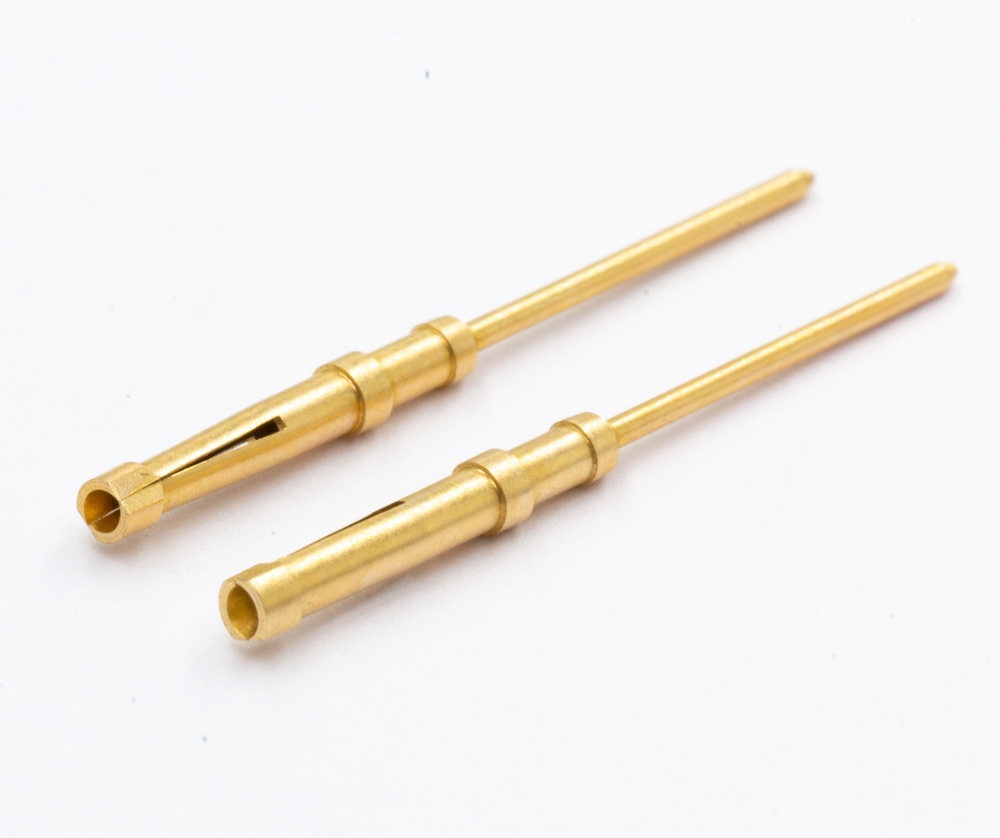By Franky Nguyen, AVF Decolletage
Introduction
The future of technology is defined by scale — not bigger, but smaller.
From wearable medical monitors and autonomous sensors to 5G infrastructure and space-grade electronics, devices are shrinking while expectations for performance are rising.
At the center of this transformation lies an unsung hero: the miniature connector pin.
These micron-scale components bridge power and data between circuit boards, chips, and modules — often operating where no larger connector can fit.
At AVF Decolletage, we help global OEMs design and manufacture miniature connector pins that deliver maximum connectivity in minimal space, ensuring the future of compact, high-performance electronics.
Explore our connector capabilities
Why Miniature Connectors Are Redefining Electronics
As electronics evolve, the demand for dense interconnects — more electrical contacts in less space — is exploding. But making components smaller introduces new engineering challenges that only precision design can solve.
Miniature connector pins are essential in systems where every millimeter matters:
-
IoT Devices: Ultra-compact sensors that monitor everything from agriculture to logistics.
-
Medical Wearables & Implants: Reliable electrical connections inside devices that fit within the human body.
-
High-Density Data Systems: Routers, base stations, and AI modules demanding high-speed, low-loss signal transfer.
-
Aerospace & Robotics: Lightweight connectors that endure vibration, temperature shifts, and radiation.
These applications share a single truth — miniaturization must never compromise reliability.

Design Challenges: Precision Beyond Size
Building miniature connector pins isn’t just about machining smaller parts — it’s about engineering balance across five competing factors:
⚙️ 1. Signal Density vs. Isolation
As pins move closer together, electromagnetic interference (EMI) can distort signals. Optimized pin geometry and surface finish help maintain insulation and signal clarity.
2. Power Handling vs. Cross-Section
A smaller pin diameter reduces the cross-sectional area for current flow. To compensate, we use high-conductivity materials such as C17300 beryllium copper or gold over nickel plating for superior electron transfer.
3. Mechanical Strength vs. Flexibility
Micro-sized pins must endure assembly pressure and vibration. Geometry modeling and finite element simulation (FEA) are used to test bending stress and fatigue life before production.
4. Heat Dissipation
Miniaturized systems pack components tightly, causing heat buildup. Pins must be thermally efficient — a property achieved through surface polishing and thermal path optimization.
⚡ 5. Manufacturability
At small scales, even plating or polishing can alter dimensions. That’s why AVF Decolletage integrates real-time dimensional feedback to ensure every pin meets tolerance after all post-machining processes.
Materials and Manufacturing Innovations
Miniature connectors rely on specialized materials that maintain conductivity and strength at sub-millimeter scales.
| Material | Function in Miniature Design | Benefits |
|---|---|---|
| Beryllium Copper (C17300) | Flexible contacts | High fatigue strength |
| Brass (C36000) | Signal conduction | Excellent machinability |
| Stainless Steel (303, 316) | Structural strength | Wear and corrosion resistance |
| Nickel & Gold Plating | Surface protection | Enhanced conductivity & longevity |
However, materials are only half the story — micro-manufacturing control defines performance.
AVF Decolletage applies statistical process control (SPC) at every stage, ensuring stability in dimensions, surface integrity, and contact resistance — even when producing millions of miniature pins per batch.
Integration with Advanced Assembly Systems
Miniature connector pins are designed not just for standalone precision but also for automated assembly compatibility.
Our pins integrate seamlessly into:
-
High-speed pick-and-place systems
-
Automated optical inspection (AOI) processes
-
Micro-soldering and crimping applications
-
Hybrid PCB and flex-circuit interfaces
AVF Decolletage collaborates directly with OEM engineering teams to co-develop pin geometries that optimize insertion force, alignment, and plating performance — ensuring flawless compatibility with customer assembly lines.
Reliability in Harsh Miniature Applications
Miniature connectors are often deployed in the toughest conditions — not just cleanrooms.
AVF Decolletage designs for:
-
Temperature Cycling (-55°C to +150°C)
-
Continuous Vibration in automotive and aerospace environments.
-
Humidity and Salt Exposure in outdoor telecom equipment.
-
Chemical Resistance in medical sterilization processes.
Our testing and inspection systems — including Keyence microscopy, CMM measurement, and XRF plating verification — confirm that every pin meets its electrical and mechanical requirements.
The AVF Decolletage Advantage
With over 350 Swiss-type lathes, AVF Decolletage offers scalability, flexibility, and consistency for miniature connector pin production.
What sets us apart:
-
ISO 9001:2015 certified manufacturing
-
Multi-site production capacity for global OEMs
-
Automated inspection and packaging systems
-
Engineering collaboration for prototype-to-production transitions
We don’t just machine parts — we help customers engineer connectivity at the smallest possible scale.
Conclusion
Miniaturization is no longer optional — it’s the foundation of progress.
Every new generation of electronics demands more performance from smaller, more efficient connectors.
Through precision engineering, advanced material science, and global manufacturing partnerships, AVF Decolletage enables the world’s innovators to build smarter, smaller, and stronger devices.
Our miniature connector pins might be tiny, but they’re shaping the future of how technology connects.
Frequently Asked Questions (FAQ)
Q1: What defines a miniature connector pin?
A connector pin with a diameter typically below 1 mm, designed for compact electronic assemblies.
Q2: What are miniature connector pins used in?
IoT sensors, medical devices, automotive systems, aerospace avionics, and telecommunications hardware.
Q3: How does AVF Decolletage ensure mechanical stability at small scales?
Through geometric optimization, SPC control, and finite element analysis to prevent deformation and wear.
Q4: Can miniature pins handle high current or frequency?
Yes, with material selection (like beryllium copper) and surface finishes that improve conductivity and reduce resistance.
Q5: Does AVF Decolletage provide co-design support?
Yes. We collaborate directly with customer engineers to refine miniature connector geometry for assembly efficiency and reliability.


